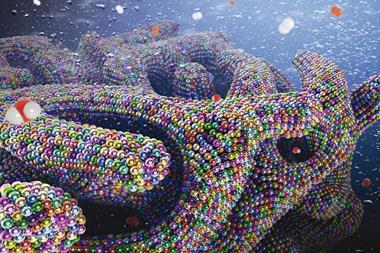Byproducts from the manufacturing industry can be converted into electrodes for water splitting, new research shows. The intrinsic nanotextured surface of the waste metal means single atoms can bind to it to form effective electrocatalysts.
Producing hydrogen through water splitting is set to be fundamental for addressing future global energy demands. However, the environmental impact of mining new metals for electrocatalysts is an ongoing issue.
To address this challenge, Jesum Alves Fernandes at the University of Nottingham, UK and his team have taken advantage of the nanotextured surfaces of waste metal swarf. Although the metal surfaces appear smooth, the researchers used scanning electron microscopy to discover grooves on the waste. These grooves support the self-assembly of catalytically-active single atoms of platinum and cobalt generated by magnetron sputtering.

The team explored different combinations of metal surfaces and single atoms, and found that platinum-loaded titanium and cobalt-loaded nickel were effective for hydrogen evolution and oxygen evolution reactions, respectively. Crucially, the catalysts contained significantly smaller amounts of platinum and cobalt when compared with state-of-the-art commercial catalysts.
The value of this study is two-fold. It shows how waste metal that is expensive to recycle, or that would otherwise be disposed of, can be repurposed. It also shows how the surface texture of the waste metal means smaller amounts of rare elements like platinum can still create effective catalysts. The researchers are confident their concept will be transferrable to industrial-scale production.
References
This article is open access
M Thangamuthu et al, J. Mater. Chem. A, 2024, DOI: 10.1039/d4ta00711e

















No comments yet